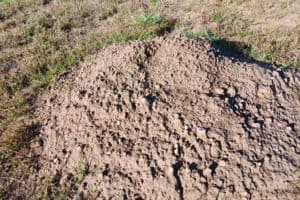Every summer, it seems, the prairie is different.The key factors, I assume, are rain ñ- how much or how little ó and the temperatures as winter gives way to spring. For example, our lilacs bloomed spectacularly this spring. That’s been a rare sight during our nine years here; typically the buds appear, then a late, bitter freeze stops them from progressing. This time, no freeze.Speaking of blooming, our Russian sage keeps commanding more ground in our backyard and last month finally erupted into waves of purple. We’ve never understood why our Russian sage blooms so much later than in town; as it is known as a “late summer blooming perennial,” maybe ours is on schedule and the other is early. Russian sage, or Perovskia atriplicifolia, “is a plant that was tailor-made for Colorado’s climate and growing conditions,” states the Colorado State University Extension’s Plant Talk Colorado. “An import from central Asia, Russian sage thrives in our high, dry climate, bright sunshine and alkaline soils.”Our Russian sage attracts both bees and grasshoppers. The grasshoppers arrived in the same tremendous numbers this summer as always, but they came late. Either that or our rhubarb popped up early. We inherited from the previous owner a rhubarb plant in the front yard that generally is devoured by grasshoppers before it has a chance to grow. This summer, though, it was a towering success. Rhubarb jam for everyone!When the grasshoppers did show up, they took no time multiplying in ridiculous numbers ñ- and growing to ridiculous sizes. Grasshoppers, from what I read online, often get 2 to 3 inches long, but can grow up to 4 inches in length. I didn’t take a tape measure to any of our hoppers, but some seemed gargantuan; there were a few that in the dim late-evening light I mistook for frogs. (This summer was the first for our greenhouse, which we set up largely because of the grasshopper problem. While the greenhouse didnít keep out all of the pests, they were kept to manageable levels, and our kale, ground cherries, peppers and other plants prospered.)But what of the jackrabbits? Every summer, there has been a family of jackrabbits in our pasture; each morning, we’d watch them cross to some unknown destination. We could always be assured of seeing jackrabbits in a yard down the road as well; this year ó nothing. Were they victims of disease? Predators? Or did they simply find new homes?There were no swallows this summer, either. While the swallows of Capistrano are famous for their annual return to San Juan Capistrano in California, the swallows of Falcon, it seems, are less reliable. We had them visit our neighborhood for a couple of summers, with the stuccoed house across the road serving as a particular attraction for them, but they were a no-show this year.Different wildlife has made an appearance, though. Pronghorn have been showing up in the back pasture of our neighbor Shirley. We watched in wonder as dozens lined up in the setting sun and marched away the other evening. I wonder if they have come our way trying to escape development to the west.One visitor we were happy not to see this summer: Canada thistle. It’s on El Paso County’s list of noxious weeds and it has been a problem on our property; this summer, it has been scarce. What has been plentiful, though, is Russian thistle ó aka tumbleweeds. While tumbleweeds result from a number of plants that dry out, break free and, yes, tumble across the landscape, Russian thistle and another non-native plant, kochia, are the common source in this area. The Colorado State University Extension describes the two as “troublesome annual weeds of rangeland, pastures, fields, disturbed areas, gardens, roadsides, ditch banks and small acreages.” If our 5 acres is any indication, tumbleweeds are going to be a significant issue this fall when the drying and tumbling begin.As autumn is officially underway, I guess we’ll known soon enough. Meanwhile, it’s time to brighten the season by putting up the autumn harvest lights. Can Christmas lights be far behind?





